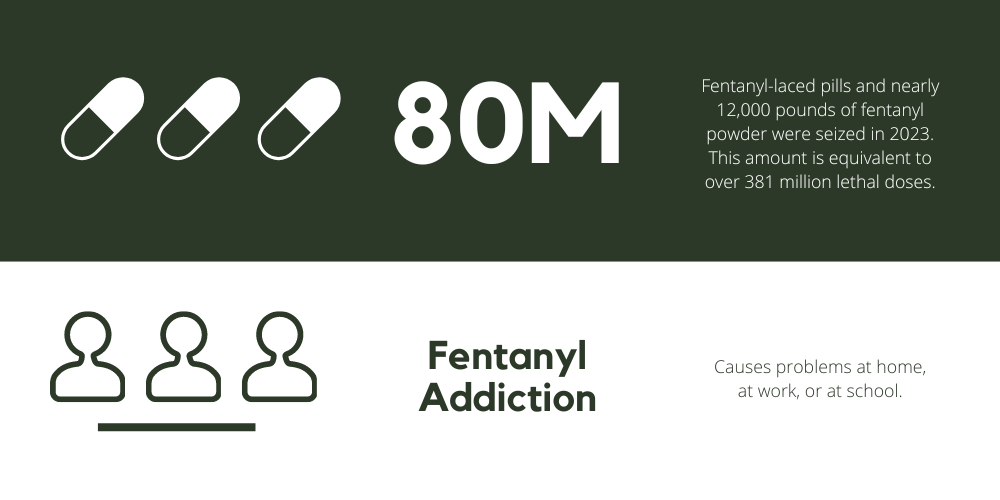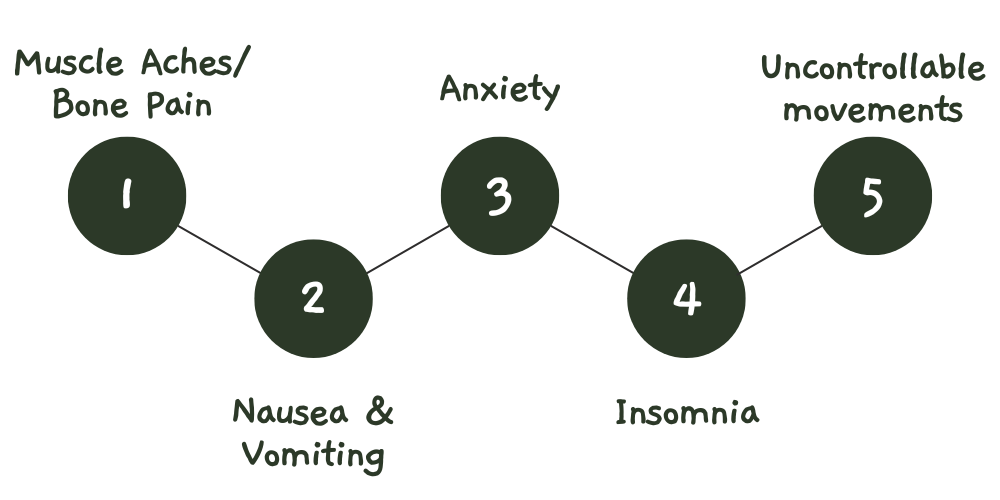
Fentanyl Detox Center in California
Fentanyl detox is the first step for patients ready to break free from opioid addiction. This powerful drug is highly potent, and stopping without medical detox can create dangerous risks. At Sullivan Recovery, our fentanyl detox center in California provides safe and effective care for individuals struggling with substance abuse, withdrawal, and the challenges of long-term sobriety.
Call for a Confidential Consultation
Our compassionate team is here to help you or a loved one begin the journey to a healthier life. Don’t face fentanyl addiction alone.
A fentanyl detox center is a treatment center where patients receive medical detox services to manage withdrawal symptoms from opioid use. Fentanyl’s potency raises overdose risk, so medical detox with continuous monitoring protects the patient during acute withdrawal. Physicians may use medication such as buprenorphine to reduce pain, anxiety, nausea, insomnia, and vomiting before rehab begins.
At Sullivan Recovery, we provide fentanyl detox within a structured outpatient model that includes PHP and IOP. This lets each patient access therapy, medication management, and clinical attention while living at home. We also assess mental health and dual diagnosis needs so fentanyl addiction treatment addresses the whole disease process.

Physical and behavior changes often signal that a patient may need medical detox. Common withdrawal symptoms include nausea, vomiting, sweating, insomnia, and intense cravings for the drug. Stress, anxiety, and irritability may worsen as substance abuse disrupts relationships, work, and mental health.
Medical detox becomes critical when a patient cannot stop opioid use on their own without facing severe withdrawal symptoms or repeated relapse. Because of fentanyl’s potency, the risk of overdose increases after even a short break in use. Early admission to a treatment center for fentanyl rehab helps stabilize symptoms, reduce pain, and create a safe path toward sobriety.
Other warning signs include mixing fentanyl with alcohol or other drugs, which heightens the risk of life-threatening complications. Patients with dual diagnosis conditions such as depression or PTSD may struggle more with coping skills and behavior regulation. For these patients, therapy, medication management, and structured rehab programs like PHP provide the attention needed to support long-term recovery.
The Centers for Disease Control and Prevention (CDC) reports that synthetic opioids like fentanyl were involved in nearly 74,000 overdose deaths in the U.S. in 2022. Fentanyl is 50 to 100 times more potent than morphine, making it one of the most dangerous drugs in circulation.
In California, the California Department of Public Health notes that fentanyl-related deaths increased by more than 1,000% between 2015 and 2021. These numbers show why patients struggling with substance abuse require urgent medical attention and professional fentanyl addiction treatment.
Alcohol and other drugs often contribute to co-occurring addiction. Many patients also face dual diagnosis conditions such as depression, anxiety, or trauma-related disorders. Sullivan Recovery addresses these underlying mental health challenges as part of a full treatment plan.

Outpatient rehab gives patients flexibility while still providing structure and support. After completing fentanyl detox, individuals can join PHP or IOP programs to continue therapy, medication management, and relapse prevention strategies.
Therapy sessions focus on coping skills, stress management, and behavior change. Patients learn how to handle cravings, improve decision-making, and rebuild daily routines. Outpatient rehab is especially effective for those with family, work, or school commitments who still need ongoing support for fentanyl rehab and recovery.
At Sullivan Recovery, outpatient treatment helps patients transition from detox into long-term sobriety without losing connection to their community. This reduces relapse risk and supports progress.
Care starts with a thorough patient evaluation covering medical history, mental health, and current substance use. We confirm diagnosis, identify withdrawal risks, and craft a detox plan that fits the level of need. This plan directs medical detox, safety monitoring, and transition into rehab.
During fentanyl detox, clinicians may use buprenorphine or other medication to manage pain, insomnia, nausea, and vomiting. Patients meet with therapists to address anxiety, stress, and behavior patterns tied to addiction. After stabilization, the patient moves into fentanyl addiction treatment that includes PHP or IOP, ongoing therapy, and relapse prevention.
We integrate dual diagnosis support for depression, PTSD, or other mental health disorders. The team monitors medication effects, reinforces coping skills, and adjusts care as symptoms change. This coordinated process improves outcomes and lowers risk over time.
Paying for fentanyl addiction treatment should not stop anyone from seeking help. Sullivan Recovery accepts most major insurance plans, including coverage for medical detox, outpatient rehab, and therapy sessions. Insurance often covers PHP and IOP services, depending on the policy.
If a patient’s insurance does not cover all costs, flexible payment plans may be available. Our admissions team works directly with families to confirm coverage and explore payment solutions. Whether through private insurance, Medicaid, or direct payment, we make sure cost does not stand in the way of fentanyl rehab.
Detox is only the first step in treating fentanyl addiction, but true recovery requires long-term support. After completing medical detox, patients need structured therapy, relapse prevention planning, and community programs that address both substance abuse and mental health challenges. At Sullivan Recovery, long-term care focuses on coping skills that help patients handle stress, cravings, and anxiety while rebuilding daily routines.
Therapy sessions emphasize behavior change, relationship repair, and strategies for managing triggers linked to alcohol, opioid, and drug use. Patients learn healthy coping techniques that reduce the risk of relapse and support stable sobriety. With attention to dual diagnosis conditions such as depression or PTSD, our team ensures fentanyl rehab treats the whole disease—not just the withdrawal symptoms.
Long-term recovery support also includes medical follow-ups, ongoing medication management when needed, and peer recovery networks. Medications such as buprenorphine may be used to stabilize opioid cravings, while therapy helps patients address insomnia, pain, nausea, or stress that can trigger relapse. Addiction is a chronic disease, but with the right treatment plan, patients can maintain sobriety and protect themselves from the risk of relapse.
If you or a loved one is struggling with fentanyl addiction, do not wait—every day increases the risk of overdose due to fentanyl’s potency. Withdrawal and relapse are especially dangerous without medical detox and professional support.
At Sullivan Recovery’s fentanyl detox center in California, patients receive safe detox, therapy, and outpatient rehab care through PHP and IOP programs designed for lasting results. Our treatment center accepts most insurance plans, making fentanyl addiction treatment accessible when patients need it most.
With the right combination of medical detox, therapy, and recovery planning, patients can overcome fentanyl addiction and build a healthier, drug-free life. Contact us today and let our team guide you toward recovery and lasting sobriety.
Fentanyl detox typically lasts 5 to 10 days, depending on the patient’s level of use, overall health, and presence of dual diagnosis conditions. Some symptoms like insomnia, anxiety, or cravings may continue for weeks, which is why follow-up therapy and outpatient rehab are important.
Doctors may use medications such as buprenorphine or other FDA-approved options to reduce pain, nausea, vomiting, and cravings. These medications make withdrawal safer while helping patients focus on therapy and coping skills
Most insurance plans cover some or all of the cost for medical detox, outpatient PHP, IOP, and therapy sessions. Patients can contact the fentanyl detox center in California directly to verify coverage and learn about payment options.
After medical detox, patients typically move into fentanyl rehab programs that focus on relapse prevention, therapy, and long-term sobriety. Continued care may include outpatient rehab, dual diagnosis treatment, and recovery support groups to help patients manage stress and behavior changes.